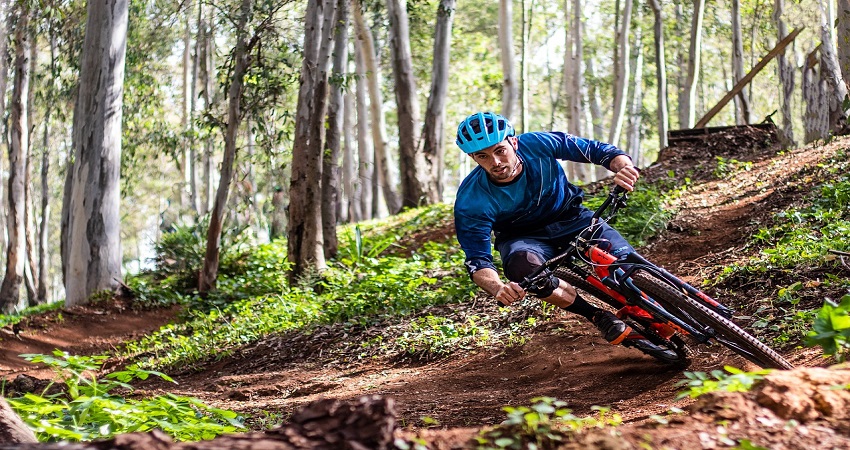Hardtail mountain bikes can be good for jumps due to their lighter weight and efficient power transfer. Their rigid frame provides a responsive feel.
For riders looking to tackle jumps and drops, hardtail mountain bikes can offer a lively and dynamic ride. With no rear suspension to absorb energy, hardtails can propel you forward with each jump, enhancing your biking experience. The simplicity and agility of hardtails make them a popular choice for jump enthusiasts seeking a more direct connection to the trail.
Despite lacking rear suspension, hardtails excel in their ability to deliver precise handling and efficient pedaling power, making them a reliable option for those looking to hit the jumps with confidence.
Advantages Of Hardtail Mountain Bikes
When it comes to choosing a mountain bike for jumps, hardtail mountain bikes offer several advantages that make them well-suited for the job. Let’s explore some key benefits of hardtail mountain bikes that make them a great option for riders who love to hit the trails and catch some air.
Responsive Handling
Hardtail mountain bikes are known for their responsive handling, allowing riders to easily maneuver and control their bikes in the air and on the trails. The absence of rear suspension means that hardtail bikes respond quickly to rider input, making them ideal for jumps and technical terrain.
Lightweight Design
Hardtail mountain bikes are typically lighter than their full-suspension counterparts, which can be a significant advantage when it comes to hitting jumps. The reduced weight of a hardtail bike allows riders to achieve more air and maneuver with greater agility, making for an exhilarating and dynamic riding experience.
Better Power Transfer
Hardtail mountain bikes provide better power transfer, enabling riders to efficiently translate their pedaling power into forward momentum. This is particularly advantageous when approaching jumps, as the enhanced power transfer allows riders to generate more speed and momentum, resulting in bigger and more impressive aerial maneuvers.
Lower Maintenance
Hardtail mountain bikes have lower maintenance needs compared to full-suspension bikes. With fewer moving parts and no rear shock to service, hardtail bikes are generally easier and less expensive to maintain, allowing riders to spend more time on the trails and less time in the workshop.
Challenges Of Hardtail Mountain Bikes
Limited Rear Suspension
Hardtail mountain bikes have limited rear suspension, unlike full-suspension bikes.
Less Forgiving On Rough Landings
Hardtail mountain bikes can be less forgiving on rough landings due to the absence of rear shock absorption.
Techniques For Jumping With A Hardtail
Proper Body Position
Keep your body centered with bent elbows and knees for balance and control.
Using Your Legs As Suspension
Bend your knees to absorb impact and provide a smooth landing.
Choosing The Right Takeoff And Landing Areas
Select smooth, clear areas with proper run-ins and run-outs for safe jumps.
Adapting Your Style And Speed
Adjust your speed and approach to match the jump size and terrain.
Tips For Safe And Successful Jumps
Start With Smaller Jumps
As a beginner, it’s crucial to start with smaller jumps. Gradually increasing the size and difficulty can help you build the necessary skills and confidence for more challenging jumps.
Gradually Increase Difficulty
Once you feel comfortable with smaller jumps, you can then gradually increase the difficulty and height of the jumps. Pushing your limits in a controlled manner can help you progress safely.
Check Your Bike’s Condition
Before attempting jumps, it’s essential to regularly inspect your hardtail mountain bike’s condition. Ensure that the tires, suspension, and brakes are in good working order to handle the demands of jumping.
Wear Appropriate Safety Gear
Never underestimate the importance of wearing appropriate safety gear, including a well-fitted helmet, knee and elbow pads, and gloves. This gear can offer crucial protection during jumps.
Practice Proper Landing Techniques
Learning the proper landing techniques is paramount for safety and success. Practicing how to absorb impact and maintain balance upon landing can help prevent injuries and improve your jumping skills.
Frequently Asked Questions Of Are Hardtail Mountain Bikes Good For Jumps?
Are Hardtail Mountain Bikes Good For Jumps?
Answer: Yes, hardtail mountain bikes are great for jumps. Their rigid rear end provides excellent power transfer, allowing you to generate more speed and airtime. However, it’s important to choose a hardtail with a strong frame and quality suspension fork to handle the impact of jumps effectively.
Remember to always wear protective gear and practice proper technique to ensure a safe and enjoyable jumping experience.
Conclusion
Hardtail mountain bikes can be good for jumps, but they may not provide the same level of cushioning as full-suspension bikes. Rider skill and terrain also play a significant role in jump performance. Ultimately, choosing the right bike for jumps depends on personal preferences and riding style.
